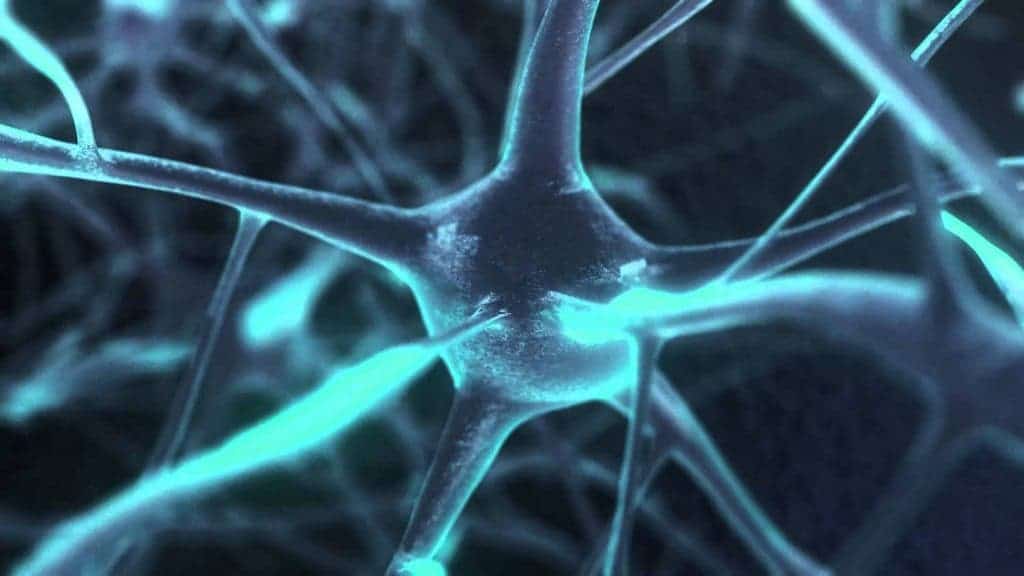Stanford University researchers have developed a method that allows them to regrow and form connections between neurons involved in vision. The method has been only tested on mice but the results suggest that mammalian brain cells can be restored after being damaged — meaning maladies including glaucoma, Alzheimer’s disease, and spinal cord injuries might be more repairable than has long been believed.

Image via youtube
It has long been believed that mammalian brain cells can’t regrow, but the new study shows that it’s possible. The team reports that they’ve managed to regenerate the axons of retinal ganglion cells, and although fewer than 5 percent of cells responded to the method, it was enough to make a difference in the mice’s vision.
“The brain is very good at coping with deprived inputs,” says Andrew Huberman, the Stanford neurobiologist who led the work. “The study also supports the idea that we may not need to regenerate every neuron in a system to get meaningful recovery.”
“I think it’s a significant step forward toward getting to the point where we really can regenerate optic nerves,” says Johns Hopkins professor of ophthalmology Don Zack, who was not involved in the research. “[It is] one more indication that it may be possible to bring that ability back in humans.”
The study shows that a regenerating axon can grow in the right direction, forming the connections needed to restore function.
“They can essentially remember their developmental history and find their way home,” Huberman says. “This has been the next major milestone in the field of neural regeneration.”
Once central nervous system cells reach maturity, they flip a genetic switch and never grow again. The team used genetic manipulation to flip this switch back on, activating the so-called “mammalian target of rapamycin” (mTOR) signaling pathway, which helps stimulate growth. At the same time, they exercised the damaged eye by showing mice a display of moving, high-contrast stripes.
“When we combined those two [methods]—molecular chicanery with electrical activity—we saw this incredible synergistic effect,” Huberman says. “The neurons grew enormous distances—500 times longer and faster than they would ordinarily.”
They observed that by covering the mice’s good eyes so they looked at the stripes only with their damaged eyes, the neurons regenerated faster. The team used a virus to deliver the altered genes to their mice, but study co-author Zhigang He believes there may be simpler ways to achieve this, such as pills, for human treatment. He, who developed the mTOR procedure, isn’t sure how the findings will impact human patients. He notes that a dual procedure, similar to that they used for the rats, hasn’t yet been developed for humans. He also pointed out that our retinal cells would have to grow a lot more than a mouse’s to rewire vision.
“The human optic nerve has to regenerate not on the scale of millimeters but on the scale of centimeters,” he explains.
Further research is needed to figure out the best use of this method for patients.
“Before, there was nothing to do” about damage to retinal nerves or other brain cells, says He, whose lab studies both retinal and spinal cord damage. “Now, we need to think about what type of patient might be most likely to benefit from the treatment.”
Huberman hopes that his method will be usable within a few years to help patients with early-stage glaucoma avoid the degeneration that leads to blindness.
“There are going to be many, many cases in which glaucoma could be potentially treated by enhancing the neural activity of retinal ganglion cells,” he says.
The findings also suggest that other brain cells could be determined to self-repair, Huberman says. Potential applications include restoring some movement after spinal cord damage, fighting memory-related diseases such as Alzheimer’s and even helping patients manage the symptoms of autism.
The full paper, titled “Neural activity promotes long-distance, target-specific regeneration of adult retinal axons” has been published in the journal Nature Neuroscience.






